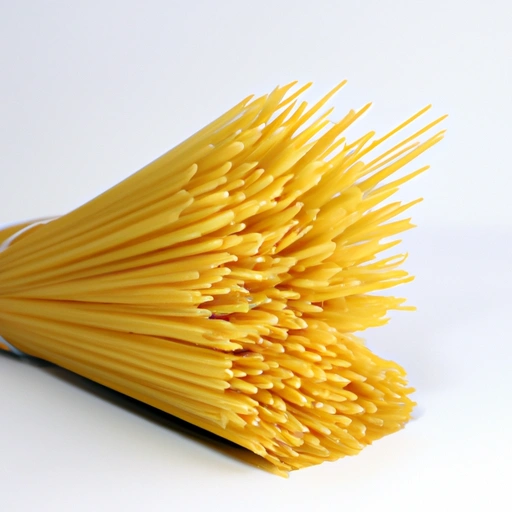Spaghetti
Description

Spaghetti is a long, thin, cylindrical pasta of Italian origin, made from durum wheat semolina. It is a staple food of traditional Italian cuisine and has become a ubiquitous ingredient found in pantries worldwide. Spaghetti can be measured in various units, from grams and kilograms for those using the metric system to ounces and pounds common in American recipes. Typically, a single serving of spaghetti is about 2 ounces (56 grams) dry, which equals approximately 1 cup (240 milliliters) cooked.
Common uses
Spaghetti is primarily used as a base for various sauces, meats, and vegetables. It is a versatile ingredient that complements a wide array of flavors and ingredients. Spaghetti aglio e olio, carbonara, and marinara are just a few examples of traditional dishes that spotlight spaghetti.
Nutritional value
Calories
A 2-ounce (56-gram) serving of dry spaghetti typically contains about 200 calories.
Protein
The same serving size provides roughly 7 grams of protein, essential for muscle growth and repair.
Fat
Spaghetti is generally low in fat, with less than 1 gram per serving.
Carbohydrates
Carbohydrates are abundant in spaghetti, with approximately 42 grams per serving.
Vitamins
It contains some B-vitamins, particularly niacin, thiamine, and folic acid, though in varying amounts depending on whether it's enriched.
Minerals
Spaghetti also provides minerals like iron and magnesium, especially if it's made from whole wheat.
Health benefits
Whole wheat spaghetti is rich in dietary fiber, which can aid digestion and help maintain a healthy weight. The B-vitamins in enriched spaghetti can support energy metabolism and brain function.
Potential risks
For individuals with gluten intolerance or celiac disease, consuming traditional wheat-based spaghetti can cause health issues. Additionally, overconsumption can lead to weight gain due to its high carbohydrate content.
Common recipes
Spaghetti is the star in a multitude of dishes, including spaghetti bolognese, spaghetti with meatballs, and spaghetti al pesto.
Cooking methods
It is typically boiled in salted water until al dente, which means it's cooked through but still firm to the bite.
Pairing with other ingredients
Spaghetti pairs well with robust tomato sauces, creamy cheese sauces, seafood, and simple dressings of olive oil and herbs.
Summary
Spaghetti is an iconic pasta variety loved for its versatility and ease of preparation. It serves as a cornerstone in a multitude of culinary traditions, adaptable to countless recipes. From hearty meat sauces to light vegetable tosses, spaghetti provides a canvas to bring together a symphony of flavors, satisfying diverse palates around the globe.